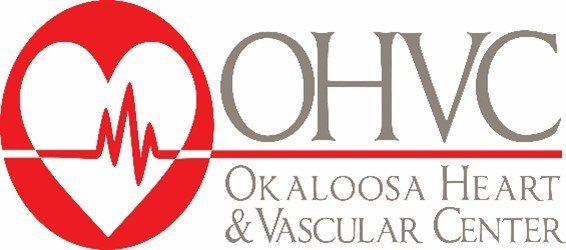Structural Interventional Cardiology
Procedures
TRANSCATHETER MITRAL VALVE REPLACEMENT (TMVR)
Transcatheter mitral valve replacement is a minimally invasive procedure used to replace a diseased or malfunctioning mitral valve in the heart. This procedure is often required for patients with severe mitral regurgitation, where the valve does not close properly, allowing blood to flow backward. TMVR involves inserting a new valve through a catheter, typically via the femoral vein, and positioning it to replace the damaged valve. The treatment usually takes 2 to 4 hours and often results in a shorter hospital stay compared to open-heart surgery.
TRANSCATHETER MITRAL VALVE EDGE-TO-EDGE REPAIR (MitraClip)
The MitraClip procedure is a minimally invasive method to repair a leaky mitral valve, known as mitral regurgitation. This condition can be caused by valve degeneration, heart disease, or other structural issues. During the procedure, a clip is inserted through a catheter and positioned to grasp the valve's leaflets, helping them close more effectively and reducing the backward flow of blood. The MitraClip procedure typically takes 2 to 3 hours and often requires a hospital stay of 2 to 3 days for recovery and monitoring.
TRANSCATHETER AORTIC VALVE REPLACEMENT (TAVR)
Transcatheter aortic valve replacement is a minimally invasive procedure used to treat aortic stenosis, a condition where the aortic valve narrows, impeding blood flow from the heart to the rest of the body. TAVR involves inserting a new valve through a catheter, usually via the femoral artery, and positioning it to replace the diseased valve. This procedure is particularly beneficial for patients who are at high risk for open-heart surgery. TAVR typically takes 2 to 3 hours, and patients often stay in the hospital for 3 to 5 days.
WATCHMAN FOR STROKE REDUCTION RISK
The WATCHMAN device is a minimally invasive solution for reducing the risk of stroke in patients with atrial fibrillation (AFib) who are not suitable candidates for long-term anticoagulant therapy. AFib can cause blood clots to form in the left atrial appendage (LAA), which can travel to the brain and cause a stroke. The WATCHMAN procedure involves inserting a small, umbrella-like device into the LAA to seal it off and prevent clots from forming. The treatment usually takes about 1 to 2 hours, and patients typically stay in the hospital for 1 to 2 days.
ATRIAL SEPTAL DEFECT (ASD) CLOSURE
Atrial septal defect closure is a procedure to close a hole in the wall (septum) that separates the two upper chambers of the heart (atria). ASDs can be present from birth and can lead to increased blood flow to the lungs and potential heart failure if left untreated. The closure is performed using a catheter to insert a device that seals the defect. The procedure typically takes 1 to 2 hours, and patients often stay in the hospital for 1 to 2 days for monitoring.
PATENT FORMAN OVALE (PFO) CLOSURE
Patent foramen ovale closure is a minimally invasive procedure to close a small hole in the heart that did not close properly after birth. PFOs can increase the risk of stroke and other complications by allowing blood clots to bypass the lungs and travel directly to the brain. The closure involves inserting a device through a catheter to seal the hole. The procedure usually takes about 1 to 2 hours, and patients typically stay in the hospital for 1 to 2 days for recovery and observation.
ATRIAL FIBRILLATION (AFIB) TREATMENT
Atrial fibrillation, or AFib, is a common heart rhythm disorder that can significantly impact your health if left untreated. It increases the risk of stroke, heart failure, and other complications. AFib treatment will restore normal heart rhythm and reduce associated risks. We offer a range of advanced treatment options, from medications to non-invasive and minimally invasive procedures, depending on the severity of your condition. Our goal is to provide care that’s as effective as it is personalized, ensuring the best possible outcome for each patient.
Atrial Fibrillation Ablation
One of the most effective procedures for managing atrial fibrillation is atrial fibrillation ablation. This minimally invasive treatment involves using advanced catheter-based techniques to target and eliminate the specific areas in the heart that trigger irregular rhythms. The two main types of ablation for AFib are radiofrequency ablation and cryoablation.
Radiofrequency ablation
utilizes heat energy to disrupt abnormal electrical signals causing arrhythmias.
Cryoablation freezes the problematic heart tissues to restore normal rhythm.
Take the Next Step in Your Heart Health Journey
At Okaloosa Heart & Vascular Center, we are committed to helping you regain control of your heart health through proven treatments, including AFib treatment and atrial fibrillation ablation. Our skilled cardiologists and supportive care team will guide you every step of the way, ensuring you have the answers and tools you need to feel confident in your treatment plan.
Contact us today to schedule an appointment with an experienced heart doctor in Crestview, FL; Niceville, FL; or Fort Walton Beach, FL. Discover how our expertise in structural interventional cardiology procedures can help you achieve a healthier heart and a better quality of life.

